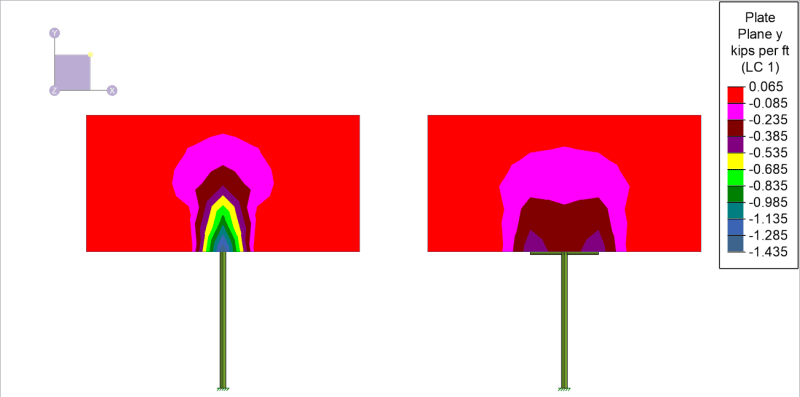Bridge_Man
Structural
Hi,
I am struggling with this one. I have this very old tank (100+ yr) that is still functioning, so we know its OK. I need to perform some assessments on it. Am modeling it using SAP2000
The model consists of the tank modeled as shell plates, a riser that goes up to the tank (also shell plates) a ring girder that surrounds the tank at a certain elevation (frame members connected perpendicularly to the tank through rigid links), and a tower that supports the ring girder and the tank along with it.
Global analysis and reaction all made sense and were within a small % of expected reactions from Water, Dead, wind , etc...
Here is my problem, according to one code am following, I do need to use the Von-Mises stresses and compare them to the allowable stress, the problem is my steel is 30 ksi and the stresses am getting are relatively high (goes up to 60 ksi close to concentration locations where the tower legs meet the ring girder and where the tank bottom meets the riser) I know these stresses are not realistic, otherwise, this tank wouldn't be here today. how should I be looking at this.
Appreciate the help.
I am struggling with this one. I have this very old tank (100+ yr) that is still functioning, so we know its OK. I need to perform some assessments on it. Am modeling it using SAP2000
The model consists of the tank modeled as shell plates, a riser that goes up to the tank (also shell plates) a ring girder that surrounds the tank at a certain elevation (frame members connected perpendicularly to the tank through rigid links), and a tower that supports the ring girder and the tank along with it.
Global analysis and reaction all made sense and were within a small % of expected reactions from Water, Dead, wind , etc...
Here is my problem, according to one code am following, I do need to use the Von-Mises stresses and compare them to the allowable stress, the problem is my steel is 30 ksi and the stresses am getting are relatively high (goes up to 60 ksi close to concentration locations where the tower legs meet the ring girder and where the tank bottom meets the riser) I know these stresses are not realistic, otherwise, this tank wouldn't be here today. how should I be looking at this.
Appreciate the help.

